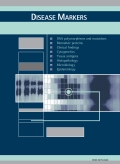Authors: Markovic, Olivera | Markovic, Nenad
Article Type:
Research Article
Abstract:
Background: In 2000, cervical acid phosphatase (CAP) has been recently described as a biomarker labeling abnormal squamous cells on Pap smears (USPTO #6,143,512). The enzyme activity is presented as a red, granular deposit on a modified Papanicolaou background. This unique property was utilized for development of MarkPap® technology intended for cervical cancer screening. Material/patients & methods: We conduct a multicenter, random assignment, assessor blinded, 2-group (test and control), split-sample designed
…clinical trial on 1,500 subject/specimens to assess safety and efficacy of the new test, in comparison with the control, for cervical cancer screening in standard Pap test environment. Safety is measured with frequency, severity and relation of adverse events. Efficacy is measured with primary endpoints (portion of positive/abnormal specimens detected, and the false negative rate). At the end of the follow-up period (two years) when the study will be completed, other efficacy endpoints such as accuracy (sensitivity/specificity) and predictive values will be added to the method evaluation. Here we present in interim analysis. Results: In April 2003, the recruitment was completed and the first twelve hundred cases have been evaluated. There was no serious or related adverse event in both groups. Minor, unrelated adverse events were rare and insignificantly distributed in both groups. Primary endpoints: A: Portion of positive/abnormal specimens detected: Pe (new test) = 0.166, Ps (Pap control): 0.082; Ps' (ACS reported value for US in year 2000): 0.07. Pe ⩾ Ps + δ, for δ = 0.5Ps. B. False negative rate: Pe = 0.05, Ps' = 0.10. Confidence intervals: 95% CI: Test [0.148–0.193], Pap control [0.068–0.098]. OR = 2.26. χ^2 = 40.69101 is greater than the critical value of 3.841 (P < 0.01). Conclusion: We concluded that CAP had added to visibility of Pap test and has enabled cytoscreeners to significantly improve the detection of positive/abnormal specimens and reduce false negative rate. We discuss this unique property of CAP with emphasis on using it as a surrogate endpoint for colposcopy and eventual removal of a cervical lesion that, if untreated, could progress into cancer.
Show more
Keywords: biomarker, acid phosphatase, Pap test, cervical cancer, cancer prevention, in vitro diagnostics, medical device, surrogate endpoint
Citation: Disease Markers,
vol. 19, no. 6, pp. 279-286, 2003
Price: EUR 27.50





